
While the practice may seem outdated or low in value, you might be surprised at how much your business can benefit from a solid email marketing strategy. In fact, the email marketing market is projected to be worth an impressive $ 17.9 billion by 2027.
But here’s the key: You can’t just send out a few emails here and there and hope for the best. By “solid email marketing strategy,” we mean one that’s thoughtful, strategic, consistent, and targeted. While there are many brands that attempt it, few actually reap the full benefits.
In this article, we’ll take you one step closer to being in that second category of brands that get results. We’ll look at 10 of the top email marketing best practices, from email subject lines to welcome emails to segmenting your target audience.
10 email marketing best practices
1. Start with a welcome email
The first email is important for setting the tone of your email campaigns and starting to build the relationship with your email subscribers.
In your welcome email, introduce yourself and tell them exactly what to expect, like how often you’ll be emailing and the types of things you’ll be talking about. It also helps to send a special offer to get their attention.
In this welcome email, Glossier introduces the brand and includes top-selling products, behind-the-scenes stories, and social media links to stay engaged.
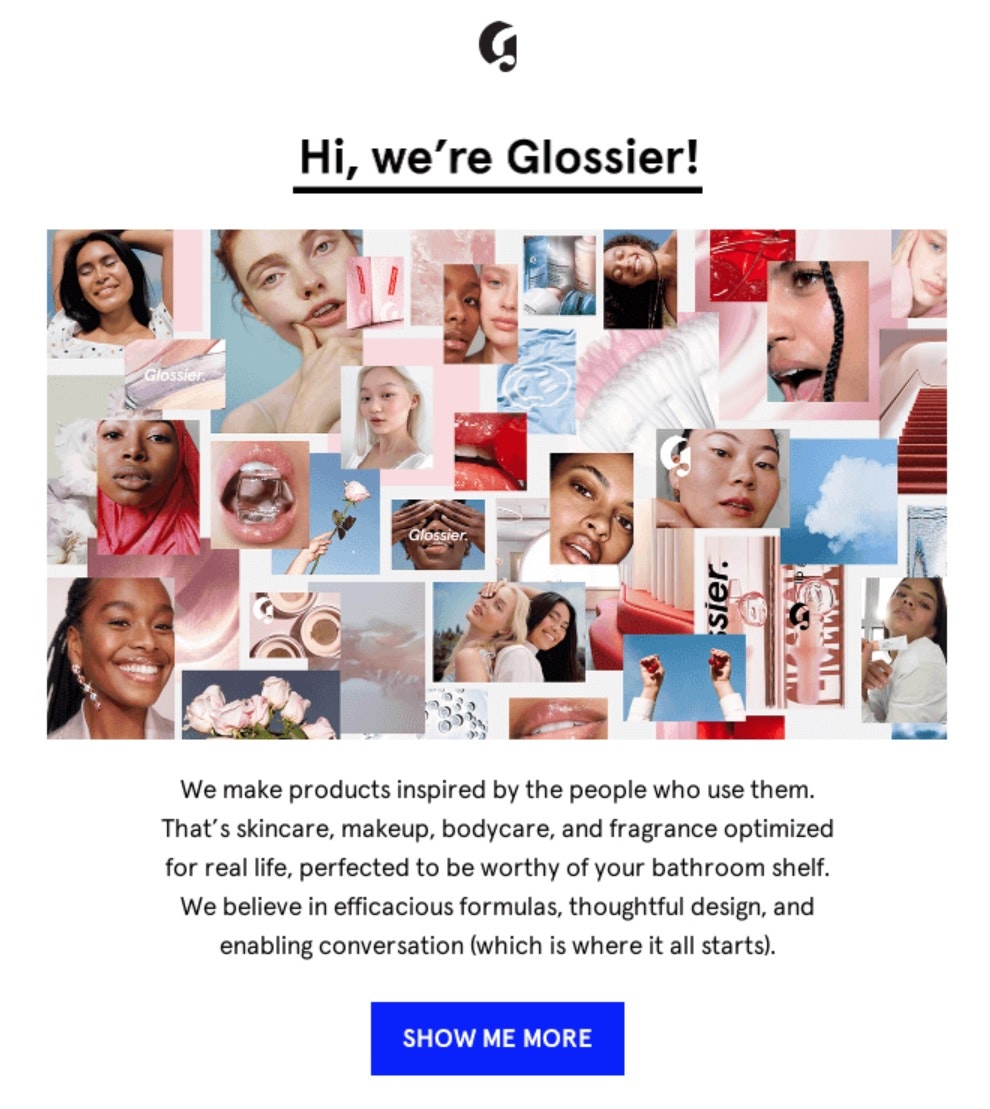
2. Write like you speak
Nobody wants to spend extra time re-reading stuffy, confusing, and overly formal writing. Your emails should flow as if you’re having a casual conversation with your target audience.
To accomplish this, opt for “smaller” words over bigger ones, use contractions (like “you’re” instead of “you are”), keep sentences short, and avoid big blocks of text that can be distracting to read through.
3. Keep it short and sweet
Building off the last point, you don’t want to send long, rambly emails that bore your readers and send them running away. (Of course, there’s a fine line between an informative email and a pointless one—just make sure you walk that line carefully.)
Research says that the ideal length for your copy is around 50 to 125 words. Try to stay in that range, unless you’re writing something like a newsletter.
Wunderground implements this email marketing best practice by keeping its emails to one or two sentences per section. Subscribers only need to read a handful of sentences to grab the message.
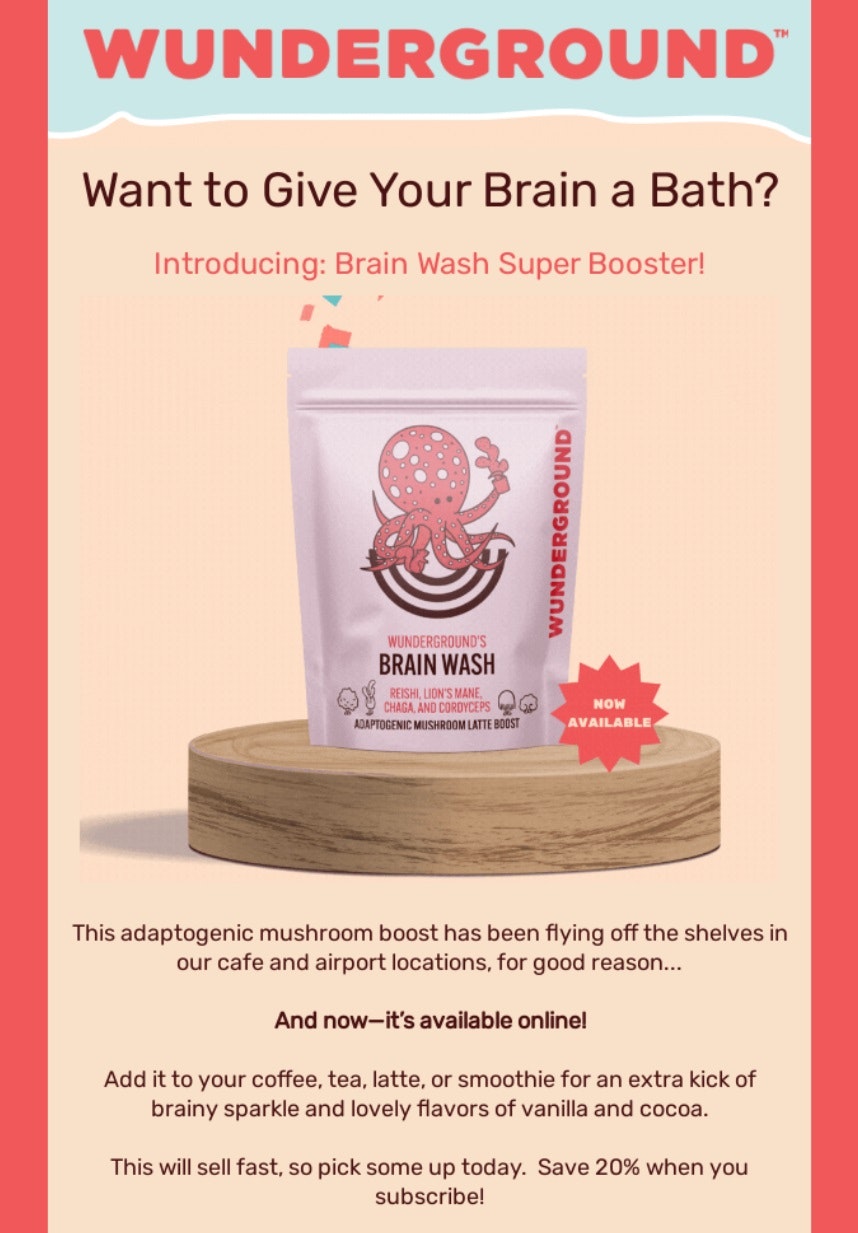
4. Make them skimmable
Visuals are everything, especially for busy people. Your emails should have a balance of visuals and text, broken into sections that guide their eyes along the page.
If they can’t skim, chances are a lot higher they’ll just close out and move on with their day. To avoid this, implement strategies like bullet points, images, headers, graphics, bold and italics, call-to-action (CTA) buttons, and white space.
Most email marketing tools will make it easy to design your emails well.
5. Pay attention to subject lines
Some email marketers claim that subject lines are the single most important part of your emails. It’s the reason they choose to open it, after all.
Put some extra thought into your subject lines. Note the most exciting, interesting, or timely parts of your core message. Make it fun. Pique their interest. Add a sense of urgency if the content is time-sensitive.
Barista & Co majorly enticed its email recipients with this email using the subject line: “Get a free gift just for opening this email!” Who could resist that?
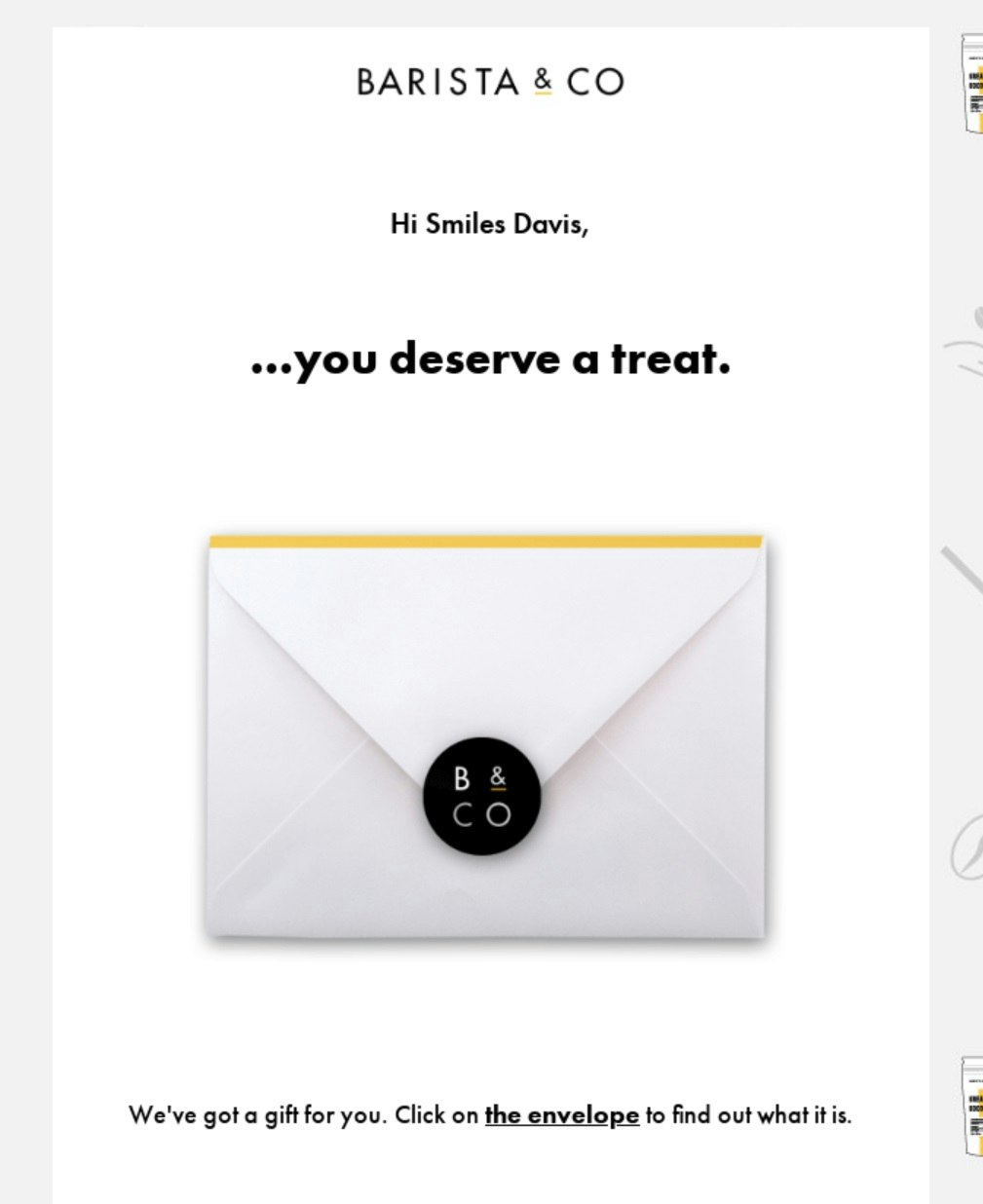
6. Give a clear, compelling CTA
Have you ever read an email and felt confused about its point? That’s exactly what you don’t want. Before you write any email, think hard about the point of the email and the action you want your readers to take after reading it.
Do you want them to buy a specific product? Read a blog post on your website? Navigate to a landing page to shop for a sale? Create a CTA button that clearly tells them where they’re about to go.
Most email marketing platforms will make it easy for you to create enticing and eye-catching CTA buttons.
7. Encourage sharing
Word-of-mouth marketing is one of the most powerful types of marketing out there. In fact, it generates $ 6 trillion of consumer spending every year!
That’s why you should always encourage sharing. You can do so by starting a referral program that offers discounts and perks for referrals. Or you can simply include sharing links in your emails to make it easy to share marketing emails.
Here, coffee company Cometeer sends a referral offer for $ 50. And at the bottom, you can see their socials for sharing.
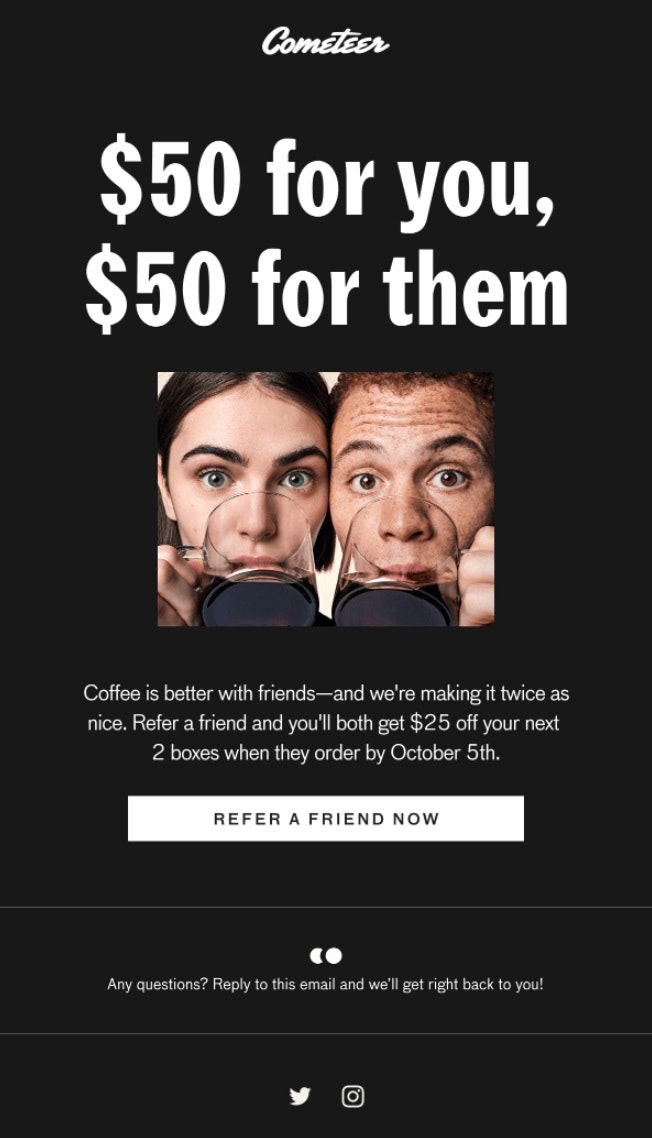
8. Optimize emails for mobile devices
Have you ever opened an email on your phone that looks downright terrible? Don’t be one of those brands. Your emails should look good no matter what type of device, browser, or screen your audience is reading it from.
Fortunately, most email marketing tools will make it easy for you to optimize your emails for mobile devices. Just be sure you’re sending yourself a test email and taking a look before you launch a campaign.
9. Make it easy to unsubscribe
If you’re making it hard for users to unsubscribe, you could be violating the CAN-SPAM Act in the US or GDPR regulations in the EU. Bottom line: Don’t be shady.
Every single email you send should have a clear Unsubscribe link at the bottom. Never hide the Unsubscribe button or make subscribers do annoying things like email you or answer a survey before they can unsubscribe.
Our Place makes it easy breezy, with its unsubscribe link as a single line—no hunting required.
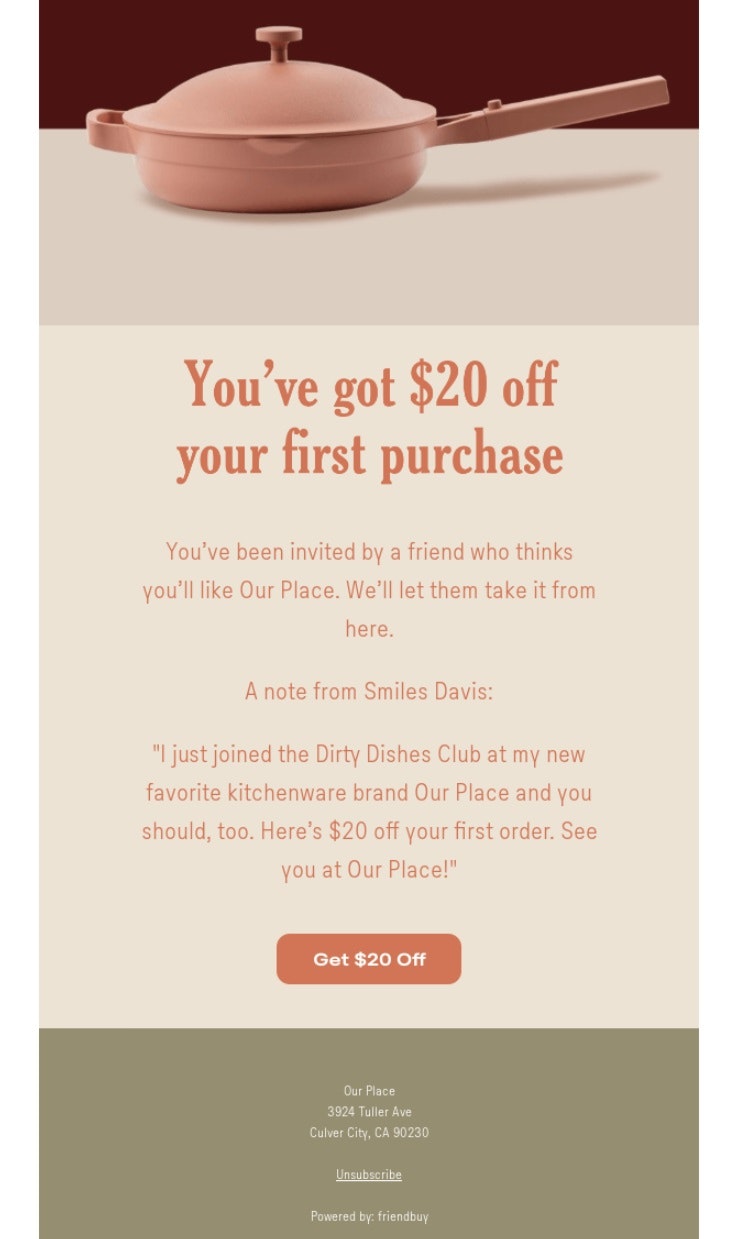
10. Segment your target audience
Email marketing gives you the ability to send tailored emails through audience segmentation. Using software, you can capture important details about your subscribers or create segments based on their website activity. Send relevant updates to specific segments rather than your entire list to maximize the results from email marketing.
Segmented campaigns show higher open rates (14.31%) and click-through rates (100.95%) compared to non-segmented campaigns. You can segment your email list based on:
- Website activity: Send targeted reminders and prompts based on the subscriber’s last visit or viewed content.
- Content interests: Inquire about visitors’ interests during sign-up and send relevant content (product-focused, company news, etc.).
- Email frequency preferences: Allow subscribers to choose how often they want to receive content (bi-weekly, weekly, daily) and segment accordingly.
Grow your business with email marketing
There are tons of email marketing best practices out there, and many places to start. While it can seem intimidating, just think of it as a long-term experiment.
Pick out the tactics that seem most impactful in the least amount of time, and go from there. Pay attention to your results and keep optimizing with every new email campaign you send.
If you approach it with an open-minded, persistent, and data-first mindset, you’ll absolutely see results.
Start selling online now with Shopify
Start your free trial



Email marketing best practices FAQ
What are email marketing best practices?
Email marketing best practices are guidelines that businesses follow when sending emails to their subscribers. Following them helps companies create better email campaigns that drive more engagement and business. Additionally, email marketing best practices help you stay compliant with anti-spam legislations like the CAN-SPAM Act.
How can email marketing best practices help my business?
Email marketing best practices can help increase trust in your products and brand. These practices allow you to craft emails that are tailored to your subscribers’ interest. This personalized approach helps to build a positive perception of your brand, resulting in higher engagement and conversions.
What are examples of email marketing best practices?
- Using double opt-in email sign-up
- Personalizing email subject lines
- Segmenting your audience
- Personalizing content
- A/B testing emails
- Optimizing sendouts for mobile email clients
Start selling online now with Shopify
Start your free trial



Want to learn more?
- 16 Email Marketing Tools To Craft and Send Perfect Emails
- Branding Your Ecommerce Business – A Step-by-Step Guide
- Guerrilla Marketing: What It is and How to Use It for Ecommerce
- Emoji SEO: 11 Reasons Why You Should Use Emojis to Rank